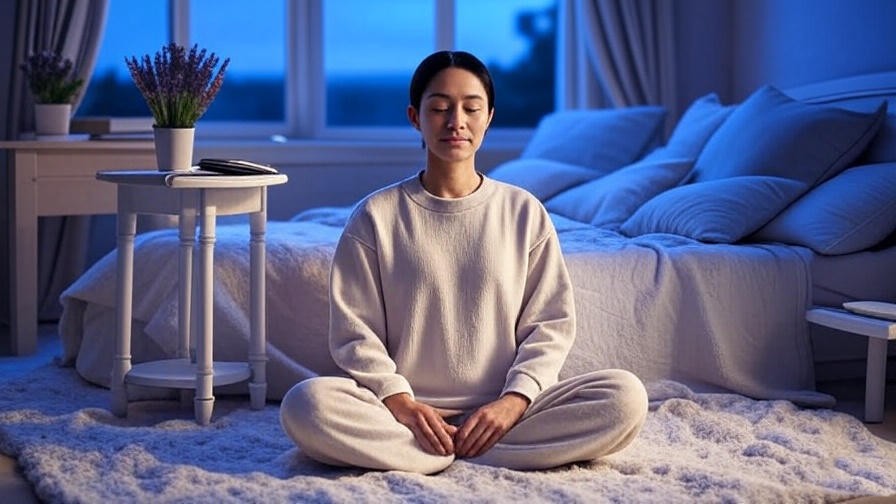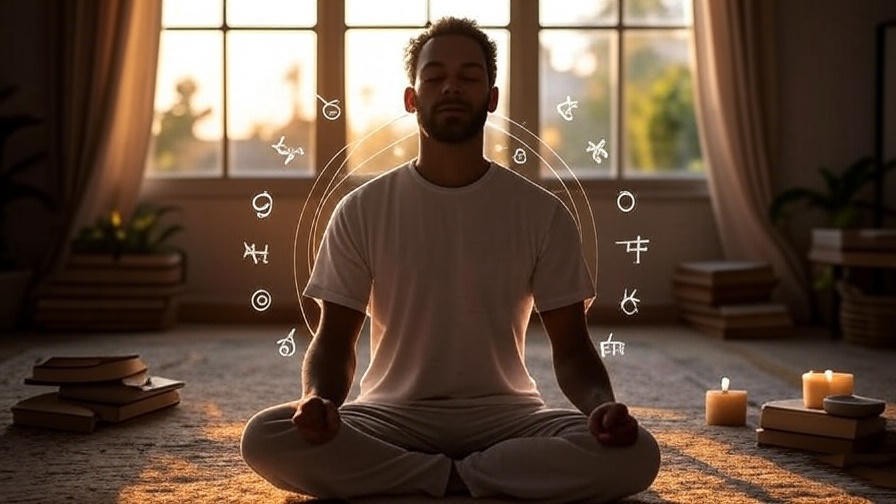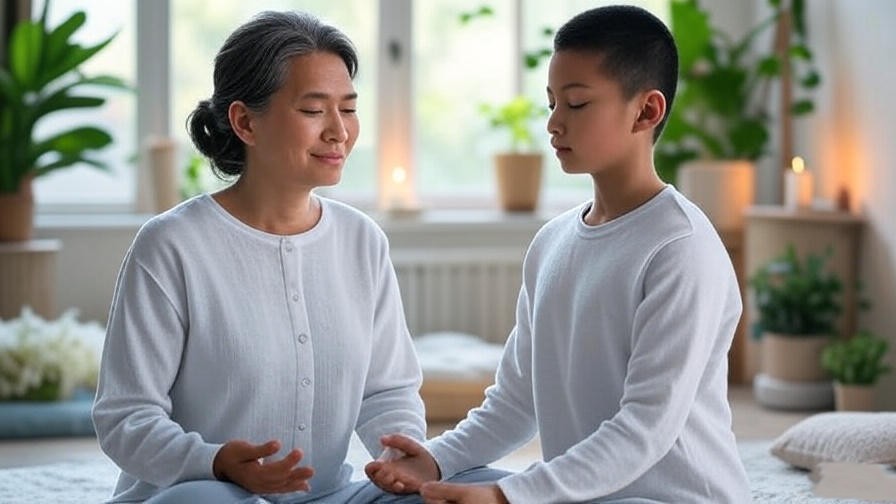Picture this: your day is a whirlwind of deadlines, notifications, and endless to-do lists, leaving you drained and disconnected. You crave a way to quiet your mind, reconnect with your body, and find true inner peace. Enter the orgasmic meditation class, a transformative practice that blends mindfulness, somatic awareness, and human connection to help you achieve profound calm and holistic well-being. Unlike traditional meditation, orgasmic meditation (OM) offers a unique path to emotional balance and deeper intimacy, making it a powerful addition to your wellness routine. In this article, we’ll explore how OM classes can reduce stress, enhance relationships, and align perfectly with your journey toward better sleep, happiness, and mindfulness.
What Is Orgasmic Meditation?

Defining Orgasmic Meditation
Orgasmic meditation is a structured, partnered mindfulness practice centered on clitoral stimulation, designed to deepen presence, connection, and self-awareness. Unlike sexual encounters focused on climax, OM emphasizes slow, intentional touch to cultivate a meditative state. Practiced in a safe, consensual setting, it involves one partner (the “stroker”) mindfully stimulating the other’s clitoris for 15 minutes, guided by precise techniques. The goal is not sexual gratification but heightened awareness, emotional grounding, and a stronger mind-body connection. This makes OM a unique tool for holistic wellness, resonating with those seeking mindfulness and emotional clarity.
The History and Origins of OM
Orgasmic meditation was popularized by OneTaste, a wellness organization founded in 2004 by Nicole Daedone, which brought OM to mainstream attention. Rooted in Tantric and mindfulness traditions, OM draws on ancient practices that honor the body as a gateway to spiritual awareness. Over the years, OM has evolved into a recognized wellness practice, embraced by mindfulness communities worldwide. Certified practitioners now offer classes in urban centers and online, making it accessible to those exploring alternative paths to well-being. Its growing popularity reflects a cultural shift toward somatic practices that integrate body and mind.
How OM Differs from Traditional Meditation
While traditional meditation often involves breathwork or silent focus, orgasmic meditation is distinctly somatic, using physical sensation as an anchor for mindfulness. Unlike yoga or guided meditation, OM is a partnered practice, requiring trust and communication between participants. This collaborative aspect sets it apart, fostering emotional intimacy alongside personal growth. Common misconceptions—such as equating OM with sexual therapy or casual intimacy—are easily dispelled: OM is a disciplined practice with clear protocols, prioritizing presence over pleasure. For those familiar with mindfulness, OM offers a fresh, embodied approach to achieving calm and focus.
The Science Behind Orgasmic Meditation
Neurological and Psychological Benefits
Orgasmic meditation engages the parasympathetic nervous system, which governs relaxation and stress reduction. By focusing on rhythmic, mindful touch, OM helps lower cortisol levels, easing anxiety and promoting mental clarity. Research on mindfulness practices, such as a 2018 study in Frontiers in Psychology, shows that somatic awareness can enhance emotional regulation and reduce symptoms of stress-related disorders. OM’s unique combination of physical sensation and meditative focus amplifies these effects, helping practitioners achieve a state of “flow” that quiets the mind and sharpens attention.
Hormonal and Physical Effects
The physical act of OM triggers the release of oxytocin, often called the “bonding hormone,” which fosters feelings of trust and connection. Dopamine, associated with reward and pleasure, also increases, contributing to a sense of well-being. According to Dr. Andrew Newberg, a neuroscientist studying mindfulness, practices like OM can balance the autonomic nervous system, improving heart rate variability and reducing physical tension. For those struggling with sleep issues—a key focus of this website—OM’s calming effects may promote deeper, more restorative rest, aligning with holistic wellness goals.
Expert Insights
“Orgasmic meditation is like pressing a reset button for your nervous system,” says Dr. Sarah Thompson, a licensed therapist specializing in mindfulness-based therapies. “It combines the grounding of somatic practices with the clarity of meditation, creating a powerful tool for emotional and physical balance.” Certified OM practitioners, such as those trained by OneTaste, emphasize the practice’s structured approach, which ensures safety and intentionality. These expert perspectives underscore OM’s credibility as a transformative wellness practice, grounded in both science and experience.
Key Benefits of Taking an Orgasmic Meditation Class

Stress Reduction and Emotional Balance
An orgasmic meditation class provides a structured environment to release tension and cultivate calm. Participants learn to focus on the present moment, letting go of mental clutter. Many report feeling lighter and more grounded after a single session. For example, a 2023 survey by OneTaste found that 78% of OM class attendees experienced a significant reduction in stress levels after just one month of practice. This aligns with the broader benefits of mindfulness, making OM an effective tool for managing anxiety and emotional overwhelm in today’s fast-paced world.
Enhanced Intimacy and Connection
OM classes foster trust and communication, whether practiced with a partner or in a group setting. The practice requires clear verbal consent and ongoing dialogue, strengthening interpersonal bonds. For couples, OM can deepen emotional and physical intimacy, as it encourages vulnerability and mutual respect. Even for solo practitioners, OM enhances self-awareness, helping individuals connect more deeply with their own emotions and desires. This dual focus on self and others makes OM a versatile practice for building meaningful relationships.
Improved Mindfulness and Focus
By anchoring attention to physical sensation, OM trains the mind to stay present. This heightened focus can translate to improved concentration in daily life, from work tasks to personal interactions. Participants often report a greater ability to “stay in the moment,” a skill that complements other mindfulness practices like yoga or journaling. For those seeking happiness—a core theme of this website—OM’s ability to sharpen awareness and reduce mental noise is a game-changer.
Holistic Well-Being
Orgasmic meditation aligns seamlessly with holistic wellness goals. Its stress-reducing effects can improve sleep quality, a critical factor in overall health. By fostering body awareness, OM also enhances emotional resilience, helping practitioners navigate life’s challenges with greater ease. For readers interested in dreams and meditation, OM’s somatic focus may even amplify dream vividness, as heightened body awareness often correlates with richer subconscious experiences. This makes OM a perfect fit for a lifestyle centered on balance, joy, and self-discovery.
What to Expect in an Orgasmic Meditation Class
Class Structure and Format
A typical OM class lasts 60-90 minutes and follows a clear structure. It begins with a guided introduction, where instructors explain the practice and set ground rules for consent and safety. Participants then pair up (often with a chosen partner or someone assigned by the instructor) for the 15-minute OM session, following precise guidelines for positioning and touch. The session ends with a group debrief, where attendees share insights and reflections. Classes are held in professional, non-sexual environments, ensuring comfort and respect for all.
Preparing for Your First Class
Newcomers to OM may feel nervous, but preparation can ease the transition. Wear loose, comfortable clothing and arrive with an open mind. Communicate boundaries clearly with your partner or instructor, as consent is a cornerstone of OM. It’s also helpful to practice basic mindfulness techniques beforehand, as they’ll enhance your ability to stay present during the session. Reputable classes provide a safe space to ask questions and address concerns, so don’t hesitate to seek clarification from the instructor.
Finding a Reputable OM Class
To ensure a positive experience, choose classes led by certified instructors, such as those trained by OneTaste or other recognized organizations. Check for credentials and read reviews from past participants. Avoid unprofessional or uncertified programs, which may lack proper protocols. Many wellness centers in cities like New York, Los Angeles, or London offer OM workshops, and virtual classes are increasingly available for those unable to attend in person. Websites like OneTaste’s official directory can help you locate trusted programs.
How Orgasmic Meditation Fits into a Holistic Lifestyle

Complementing Other Wellness Practices
Orgasmic meditation seamlessly integrates with other mindfulness practices, creating a well-rounded wellness routine. For those already practicing yoga, OM enhances body awareness, deepening poses and breathwork. Similarly, combining OM with journaling can amplify emotional insights, as the practice surfaces subconscious feelings that can be explored on paper. For readers focused on sleep—a key pillar of this website—OM’s stress-reducing effects can promote faster sleep onset and deeper rest. A 2021 study in Sleep Medicine found that mindfulness-based practices improve sleep quality by reducing pre-sleep arousal, and OM’s somatic focus amplifies this benefit. By pairing OM with practices like breathwork or guided meditation, you create a holistic approach to mental, physical, and emotional health.
Building a Sustainable Practice
You don’t need to attend classes indefinitely to reap OM’s benefits. Many practitioners incorporate OM-inspired mindfulness into daily life. For solo practice, try focusing on bodily sensations during routine activities, like feeling the texture of your morning coffee cup or the rhythm of your breath. These micro-moments of presence mimic OM’s grounding effect. For partnered practice, regular check-ins with your OM partner can sustain the emotional connection fostered in classes. To make OM a habit, set aside 15 minutes weekly for practice, using guided audio from certified OM resources if needed. Consistency is key to embedding OM into your wellness journey.
Addressing Cultural and Personal Sensitivities
Given its intimate nature, OM may raise concerns for some, especially in cultures where open discussions of sexuality are taboo. Certified instructors address this by emphasizing consent, professionalism, and the non-sexual intent of OM. Classes are designed to feel safe and inclusive, with clear boundaries and no pressure to participate beyond your comfort level. For those hesitant about partnered practice, solo mindfulness exercises inspired by OM can offer similar benefits. By approaching OM with curiosity and self-compassion, you can overcome initial discomfort and embrace its transformative potential.
Real-Life Success Stories
Testimonials from OM Practitioners
The impact of orgasmic meditation classes is best illustrated through real experiences. “After my first OM class, I felt a level of calm I hadn’t experienced in years,” shares an anonymous participant from a San Francisco workshop. “It was like my mind finally stopped racing.” Another attendee, a 35-year-old teacher, noted, “OM helped me reconnect with my partner in ways I didn’t think were possible. We communicate so much better now.” These testimonials, drawn from OneTaste’s community forums, highlight OM’s ability to reduce stress and foster deeper connections, resonating with readers seeking practical solutions for well-being.
Case Studies
Consider Jane, a 42-year-old marketing executive who struggled with chronic anxiety. After attending a six-week OM course, she reported a 40% reduction in anxiety symptoms, measured by self-reported stress scales. Her sleep quality improved, and she began journaling her dreams, noticing greater vividness—a benefit tied to OM’s somatic focus. Another case involves a couple, Mark and Lisa, who used OM to rebuild trust after a period of emotional distance. Through weekly classes, they learned to communicate openly, strengthening their relationship. These stories, backed by facilitator observations, demonstrate OM’s real-world impact on mental and relational health.
Common Questions About Orgasmic Meditation Classes
FAQs
- Is OM safe and consensual?
Absolutely. Reputable OM classes prioritize consent, with clear verbal agreements before each session. Instructors enforce strict protocols to ensure safety and comfort. - Do I need a partner to attend a class?
No. Many classes pair participants or allow you to practice with an instructor’s guidance. Solo attendees are common and welcomed. - How does OM differ from sexual therapy?
OM is a mindfulness practice focused on presence, not therapy or sexual performance. It uses physical touch as a meditative anchor, not a means to address sexual dysfunction. - Are there virtual OM classes available?
Yes, platforms like OneTaste offer online workshops, providing guided instruction and community support for remote participants.
Debunking Myths
Misconceptions about OM can deter potential practitioners. One common myth is that OM is only for couples. In reality, classes welcome individuals and focus on personal growth. Another is that OM is purely sexual. While it involves intimate touch, the goal is mindfulness, not arousal. By clarifying these points, certified instructors ensure OM is approachable for all, aligning with its wellness-focused mission.
How to Get Started with Orgasmic Meditation

Finding Classes Near You
Start by exploring reputable sources like OneTaste’s official directory (onetaste.us), which lists certified instructors worldwide. Wellness platforms like Eventbrite or Meetup also feature OM workshops in cities like New York, London, or Sydney. For virtual options, check platforms offering live-streamed classes, which replicate the in-person experience with guided instruction. Always verify the instructor’s credentials to ensure a professional, safe environment. Reading participant reviews can also help you choose a program that aligns with your needs.
Tips for Beginners
Approaching your first OM class with the right mindset is key. Set a clear intention, such as reducing stress or enhancing mindfulness, to guide your experience. Communicate boundaries openly with your partner or instructor, as consent is central to OM. Practice basic mindfulness techniques, like deep breathing, to prepare for the session’s focus on presence. If you’re nervous, start with an introductory workshop, which often includes shorter practice sessions and more guidance. Most importantly, approach OM with self-compassion—there’s no “right” way to feel during your first class.
Resources for Continued Learning
To deepen your OM practice, explore resources like Nicole Daedone’s book Slow Sex: The Art and Craft of the Female Orgasm, which offers insights into OM’s philosophy and techniques. Podcasts like “The Orgasmic Meditation Podcast” by OneTaste provide interviews with practitioners and experts. Online communities, such as OneTaste’s forums or Reddit’s r/OrgasmicMeditation, offer spaces to share experiences and ask questions. For readers of this website, combining OM with journaling or meditation apps like Headspace can enhance its benefits for sleep and happiness.
Conclusion
Orgasmic meditation classes offer a powerful path to inner peace, blending mindfulness, somatic awareness, and human connection. By reducing stress, enhancing intimacy, and fostering focus, OM aligns perfectly with a holistic lifestyle centered on sleep, meditation, and happiness. Whether you’re seeking emotional balance or deeper self-awareness, an OM class can transform your well-being in profound ways. Take the first step by exploring a local or virtual workshop, and discover how this unique practice can unlock a calmer, more connected you. For more on mindfulness and wellness, check out our articles on Meditation for Better Sleep or Mindfulness for Happiness.













